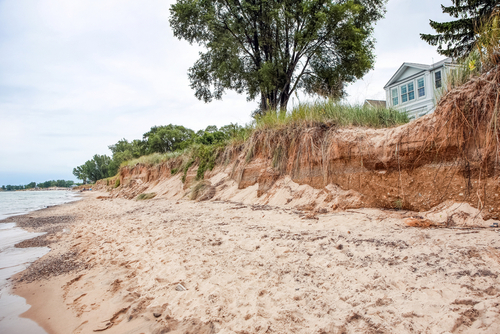
After securing U.S. House support last week, the Safeguarding Tomorrow through Ongoing Risk Mitigation (STORM) Act, which is meant to reduce risks of flooding, rising water levels, and shoreline erosion along the Great Lakes, is headed for final review by the president.
Introduced by U.S. Sens. Gary Peters (D-MI), Ron Johnson (R-WI), Debbie Stabenow (D-MI) and James Lankford (R-OK), and guided in the House by U.S. Rep. Angie Craig (D-MN), the bill offers support to affected communities facing climate change induced natural disasters. Such disasters have caused millions of dollars in damage to date, destroying buildings and beaches alike. Federal loans, as offered under STORM, could help local governments to better mitigate such problems.
“Providing cost-effective tools directly to local communities across Michigan is critical to helping them stave off the harmful effects that coastal erosion, flooding and rising water levels have on people’s lives and livelihoods,” Peters said.
Under the proposal, the Federal Emergency Management Agency (FEMA) would fund and help states create revolving loan funds for local governments. These loans would be expressly used for projects that reduce natural disaster risks, such as shoreline erosion or water levels, and would be accessible more quickly than traditional FEMA grants. The bill’s supporters cited studies showing that resilience and mitigation spending, like that proposed under STORM, saves taxpayers more than $6 for every dollar invested.
“Current hazard mitigation funds, such as those provided through the Building Resilient Infrastructure and Communities program authorized under the Disaster Recovery Reform Act, are made available to communities only after disasters strike,” Johnson said. “These programs that fund hazard mitigation projects are critical, but we also need to focus on building resiliency in communities before they happen. Studies have shown that for every $1 spent on hazard mitigation, $6 is saved in the response and recovery process. This bill will help address and fund projects before disasters strike, saving taxpayer money, and decreasing future loss of life and property.”
The bill has also received the support of groups like the U.S. Chamber of Commerce and the American Society of Engineers.




